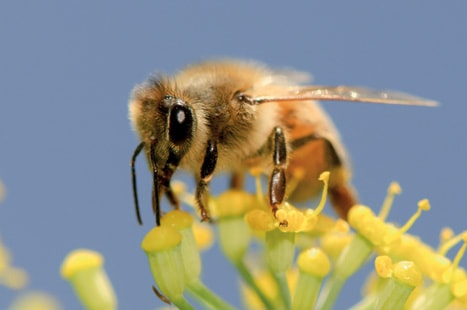
Meshes promote soft tissue healing inside the body following surgery but they carry an increased risk of infection as the bacteria can get a hold inside the body by forming a biofilm on the surface of the mesh.
Skin and soft tissue infections are the most common bacterial infections, accounting for around 10 per cent of hospital admissions, and a significant proportion of these are secondary infections following surgery.
Currently, any infection is treated with antibiotics, but the emergence of antibiotic-resistant strains - or ‘superbugs’ - means scientists are looking for alternatives.
Engineering a superbug fightback
Sandwiching eight nano-layers of Manuka honey (with a negative charge) between eight layers of a polymer (with a positive charge), the scientists and engineers led by Dr Piergiorgio Gentile at Newcastle University, and Dr Elena Mancuso, at Ulster University, showed it is possible to create an electrostatic nanocoating on the mesh which in the lab inhibits bacteria for up to three weeks as the honey is slowly released.
Publishing their findings in Frontiers, the team said the study highlights the potential benefits of infusing medical implants with honey.
Dr Piergiorgio Gentile, lead author and a biomedical engineer at Newcastle University, said: “Mesh is implanted inside the body to provide stability while the internal tissues heal but, unfortunately, it also provides the perfect surface for bacteria to grow on. Once the bacteria form a biofilm on the surface, it’s very difficult to treat the infection. By sandwiching the honey in a multilayer coating on the mesh surface and slowly releasing it, the aim is to inhibit the growth of the bacteria and stop the infection before it even starts.
“These results are really very exciting. Honey has been used to treat infected wounds for thousands of years, but this is the first time it has been shown to be effective at fighting infection in cells from inside the body.”
Dr Mancuso, a lecturer within the Nanotechnology and Integrated Bioengineering Centre (NIBEC) at Ulster University, said: “Although numerous antibiotic-based coatings, constructed through layered approaches, and intended for the development of antibacterial implants, have been investigated so far, it has been found that the effect of antibiotics may decrease with time, since antibiotic-resistant bacteria may potentially develop.”
Manuka honey contains methylglyoxal, which has specific antimicrobial properties. Using medical-grade Manuka honey, the team used the layer-by-layer assembly technology to create alternating layers of negatively charged honey and positively charged conventional biocompatible polymer to modify the surface of electrospun membrane, each layer 10-20nm thick.
Tested in-vitro on different soft tissue cell lines to test their biocompatibility, the functionalised meshes were exposed to a range of common bacterial infections such as MRSA, Staphylococcus and E coli.
“Too little honey and it won’t be enough to fight the infection but too much honey can kill the cells,” said Dr Gentile. “By creating this 16-layered ‘charged sandwich’ we were able to make sure the honey was released in a controlled way over two to three weeks which should give the wound time to heal free of infection.”





Project to investigate hybrid approach to titanium manufacturing
What is this a hybrid of? Superplastic forming tends to be performed slowly as otherwise the behaviour is the hot creep that typifies hot...